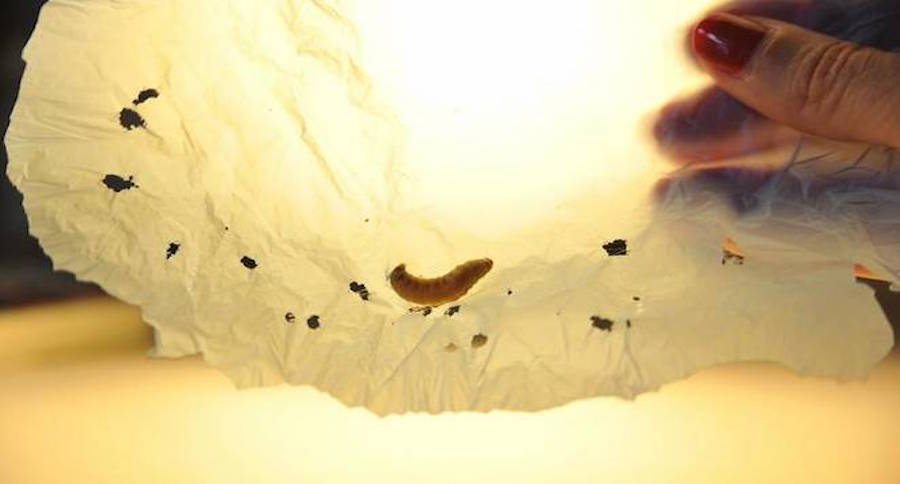Scientists have found that the venerable wax worm will eat shopping bags. Have we finally found a solution to the plastic waste problem?
The next time that you think to use one of our favorite fishing baits, the wax worm, think about this: they may be our next great defense against the scourge of plastic waste.
In a chance discovery, researchers have found that the popular panfish bait can biodegrade or 'eat' polyethylene. Federica Bertocchini, a scientist with the Institute of Biomedicine and Biotechnology of Cantabria, Spain, who also happens to be an amateur beekeeper, was removing the larvae of the Galleria mellonella, or greater wax moth from her hives.
When the Spanish researcher placed the future moths into a plastic bag, the kind in which most of us usually place groceries, a stunning thing happened: holes almost immediately appeared in the plastic.
The wax moth and its brood, the wax worm (caterpillar) live inside bee hives as a parasite. The moths get into the hives, lay their eggs, and the larvae feed on the wax. The chemical bonds from the polyethylene bags aren't much different than what the worms break down consuming bees wax.
Now these same scientists are discovering what the worms can really do. After placing about 100 wax worms into a plastic grocery bag holes began to appear in only 40 minutes. In 12 hours the bag was reduced over 92 mg.
The source of the degradation seems to be an enzyme emanating from the worms.
Cambridge's Paolo Bombelli said,
"If a single enzyme is responsible for this chemical process, its reproduction on a large scale using biotechnological methods should be achievable. This discovery could be an important tool for helping to get rid of the polyethylene plastic waste accumulated in landfill sites and oceans."
They confirmed that it wasn't just the chewing by the caterpillars; that they weren't just 'eating' the plastic after the researchers mashed up some of the worms and smeared them on polyethylene bags.
The result? The bags degraded in a similar way.
Knowing now that the caterpillars can't consume the plastic without first changing its chemical makeup, researchers are now trying to discover just what it is the larvae do to beak the chemical bonds of the polyethylene.
Bombelli said,
"The caterpillar produces something that breaks the chemical bond, perhaps in its salivary glands or a symbiotic bacteria in its gut. The next steps for us will be to try and identify the molecular processes in this reaction and see if we can isolate the enzyme responsible."
As amazing a discovery as this might be for the already existing pollution problem, the commercial producers of this well known fishing bait may have just hit the jackpot!
If it can help us catch more fish and supply a much needed solution to a bad pollution problem, so be it.
Cover photo via LLL Reptile
NEXT: CANADIAN RESEARCH SHOWS FRACKING FLUIDS CAUSE HARM TO RAINBOW TROUT





